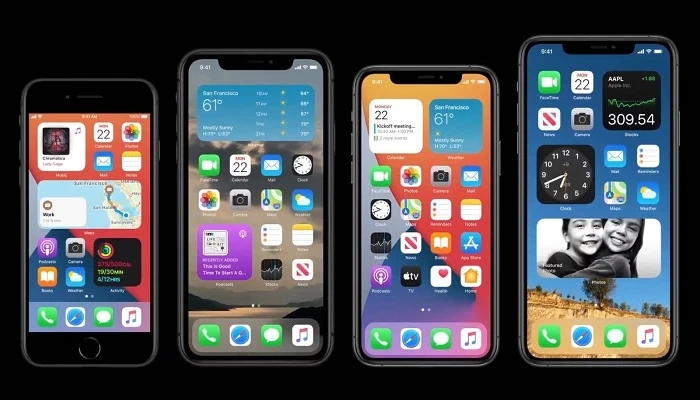No doubt, iOS 14 is certainly the most feature-rich iOS update by Apple to date. This update also carries some significant issues, like the rapid battery drainage, random restarting of the device, and sluggishness. A vast number of iOS users have complained regarding these issues to the concerned authorities. So, if you are among those whose device performs very sluggish after updating it to iOS 14, then try the fixes that we have mentioned below:
[caption class="snax-figure" align="aligncenter" width="662"] [/caption]
[/caption]
How to Fix Issues in an iPhone with iOS 14?
The software takes a reasonable amount of time to get settled on to your device when your device is updated. So, you need to wait for a considerable amount of time to let your device’s operating system settle. In case your device still feels slow even if you have updated to iOS 14, then the issue might be because of other factors like resource-hogging, cluttered storage, random glitch, and more.
So, with the help of the titles mentioned below, you can troubleshoot the issues you are facing with your iPhone:
Force Restart or Hard Reset Your iPhone
Forced restarting is the first basic step that you can follow on your iOS device. It helps in fixing the randomly occurring issues on the devices. You may hard reset your device in case Force Restart doesn’t work for you. Hard Resetting steps may vary depending upon your iOS device lineup. Once you have force-started or done hard resetting of your device, wait and check if your iOS device is working well or not.
Keep Only Useful Files
You need to keep track of files and clean up the unnecessary data from your device on a timely basis. This is because the cluttered storage will make your device sluggish and drain its battery more quickly. So, it is recommended that you eliminate the data that is not required on your device.
To get an overview of how your storage is getting consumed by the files and folders, click on the Settings, go to General, and then click on iPhone/iPad Storage. You may further delete the files, folders, or even widgets that you don’t need anymore. Your device will start running smoothly after you are done removing unnecessary data.
Control the Resource-Hogging Features
Resource-Hogging features not only slow down the performance of the devices but also drain the battery very quickly. So, the users should have proper control on them, or else these features will directly affect the performance of the devices.
Two significant resource-hogging features you need to keep on the disabled mode in your device are the ‘Background app refresh’ and ‘Location services.’
To disable the background app refresh, go to ‘Settings’ and click on ‘General,’ then proceed to ‘Background App Refresh’ and turn it off.
To disable the Location service, head over to the Settings app and click on ‘Privacy’ and then on Location Services and disable it. You can also manage its usage if it is required.
Reset All Settings
If none of the above-mentioned solutions works out for you, then it’s time to reset all your device settings. All the existing settings of your device will be cleaned, including the VPN settings and Wi-Fi passwords. You will have to set them again after you reset all the settings.
You can bring your device to the factory default by following the below-mentioned steps:
- Go to Settings
- Click on ‘General,’
- Press ‘Reset,’
- Then click on ‘Reset All Settings.’
Your device will start running normally after that.
Update Software on Your iOS Device
Proceed to software update if no other method is working for you. With every new update, Apple offers many fixes for the devices, so we recommend you go for the latest software version. To check for the new update, go to the Settings of your iOS device and click on ‘General’ and then click on ‘Software Update’ to find if any new update is available or not. As usual, you need to have more than 50% battery on your device for performing any update. In case it is plugged into charging, then the power should be at least 20%.
So, this was all about how you can clear up the sluggishness of your iOS device.
Source Url - Tips to Fix the Sluggish iPhone After iOS 14 Update


